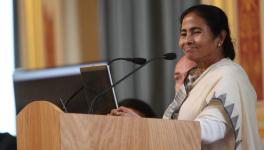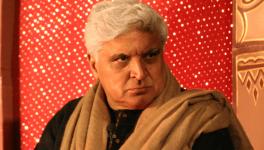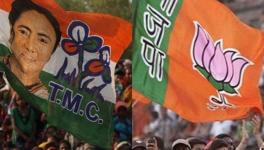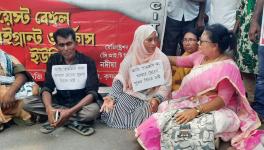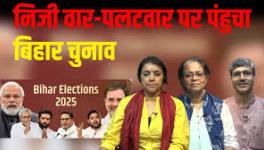Bengal Budget’s Reality: Jobs Denied, Hopes Dashed!
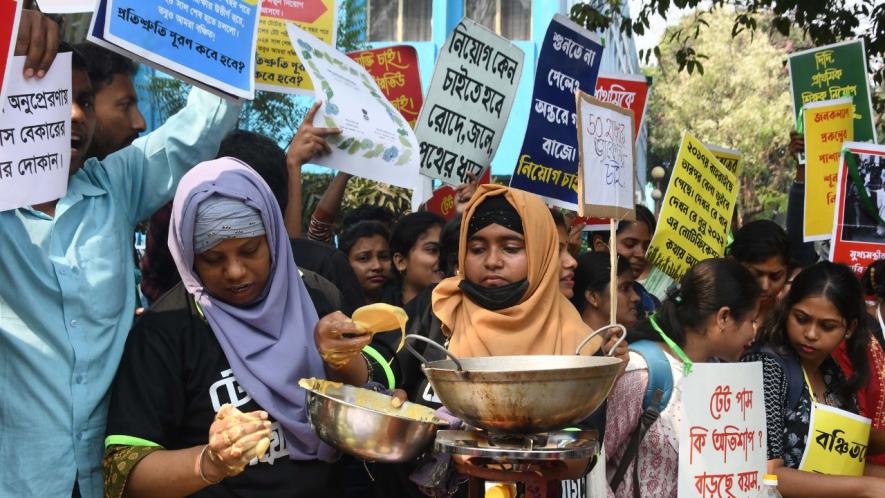
Primary teacher candidates who passed the Teacher Eligibility Test (TET) organiszed a symbolic protest called “BekarMela” (Fair of the Unemployed), setting up stalls selling papad, potato chops (aloor chop), beguni (fried eggplant slices), fried eggs, tea, and biscuits.
"O Dadabhai, O Didibhai, parotta khaben naki? TET pass kora bekar amra, dim pauruti bechi!" (Oh, beloved brothers and sisters, would you like to eat some parathas? We, the TET-passed unemployed, are selling fried eggs and bread).
This poignant appeal echoed outside Indira Bhavan in the Karunamoyi area of Salt Lake, Kolkata, on February 12, coinciding with the presentation of the West Bengal state budget for 2025–26.
In 2022, primary teacher job candidates, who had passed the Teacher Eligibility Test (TET), had organised a symbolic protest called “Bekar Mela” (Fair of the Unemployed), setting up stalls selling papad, potato chops (aloor chop), beguni (fried eggplant slices), fried eggs, tea, and biscuits. Each stall displayed a sign reading “Mukhomontrir Anupreronay” (Inspired by the Chief Minister), highlighting the irony of their situation while demanding teaching appointments.
The protestors chanted slogans directed at West Bengal Chief Minister Mamata Banerjee, urging her to address their long-pending recruitment. “We passed the TET exam three years ago, but we have not been called for interviews. This protest is our way of voicing our frustration,” Ayesha Khatun, Swasti Rani Ray, Partha Banik, and Indrajit Pal from East Bardhaman; Kallol Hazra from Bankura; Dipankar Bhattacharya and Mitali Manna from Barasat, North 24 Parganas; Hafizur Rahman and Subhas Chandra Bag from South 24 Parganas; Nur Alam and Kajol Tudu from Purulia; and Iqbal Sheikh from Murshidabad, told this reporter.
The protestors reiterated that the Chief Minister had previously remarked, “What if there are no jobs? You can still earn a decent living by selling chops.” In response, they said they organised this satirical fair, selling snacks, like chops and ghugni, symbolically following the Chief Minister’s suggestion.
Despite the creativity and severity of the protest, the Trinamool Congress (TMC)-led West Bengal government appeared indifferent. Neither the budget speech nor the Chief Minister’s subsequent press conference mentioned the recruitment of TET-qualified primary teachers. Moreover, the 2025–26 budget offered no clear direction regarding new job opportunities in the state.
On February 12, West Bengal's Finance Minister (Independent Charge), Chandrima Bhattacharya, presented the state budget, proposing an expenditure of ₹3,89,194 crore for 2025–26. She highlighted that the state's Gross State Domestic Product (GSDP) had grown by 6.8% in 2024–25, surpassing India’s growth rate of 6.37%. The state’s revenue is estimated at ₹1,12,543 crore, with ₹1,06,998 crore expected from the Central tax share and ₹37,000 crore from Central grants. Additionally, the government plans to borrow ₹95,000 crore from the market.
A significant concern is that ₹81,510 crore (72.42%) of the state’s own revenue will be allocated for interest payments and debt servicing. Furthermore, ₹22,000 crore (19.91%) of the state’s revenue is projected to come from alcohol sales, with thousands of new liquor shop licenses expected to be issued across West Bengal.
Critics have raised concerns about the state's financial sustainability, questioning, “Will the state be run on alcohol revenue and borrowed funds? Are nearly 10 crore people in Bengal being pushed into a debt trap?”
When the Left Front government lost in 2011, the total loan amount in the state was ₹1,92,919 crore 90 lakhs. Under TMC-led government, the loan in 13 years will reach ₹7,71,670 crore in March 2025. Currently, the per capita debt in West Bengal stands at ₹70,653, painting a grim picture of the state's economic future.
This financial strain became particularly evident in what is likely to be the last full budget before the 2026 West Bengal Assembly elections.
Government Claims vs. Reality
On February 12, the West Bengal government presented its budget for the upcoming financial year, notably without announcing any new employment-generating projects. The budget offered little for the people of Bengal, aside from the provision of smartphones for thew Integrated Child Development Services (ICDS) and Accredited Social Health Activist (ASHA) workers, along with a 4% dearness allowance (DA) hike for government employees and pensioners.
During a press conference held on the same afternoon, Chief Minister Mamata Banerjee stated: “A 4% DA increase has been granted for government employees. This will benefit all our employees, teachers, and non-teaching staff and will be effective from April 1.” She further claimed that Bengal government employees receive more benefits than their Central government counterparts.
However, the reality presents a starkly different picture. While Central government employees currently receive 53% DA, Bengal government employees are receiving only 14%. With the 4% increase effective from April 1, their DA will rise to 18%, leaving a substantial 35% gap still pending.
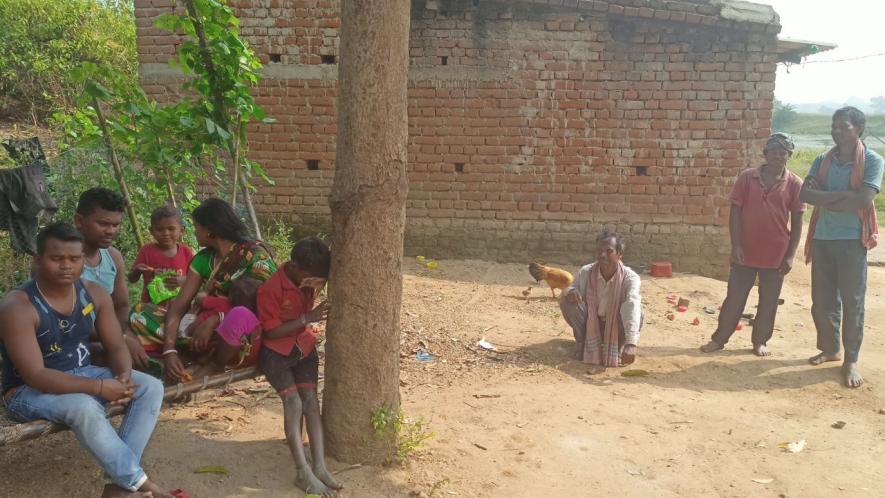
Jobless man and women at Moula village Ranibandh Bankura.
The Chief Minister's remarks triggered widespread discontent among state government employees and teachers. “No state government employee across the country faces such a significant DA backlog. The Chief Minister is perpetuating a falsehood regarding the rightful entitlements of state government employees,” Biswajit Gupta Choudhury, general secretary of the State Coordination Committee; Sukumar Pain, general secretary of the All-Bengal Teachers' Association; and Dhruboshekhar Mandal, general secretary of the All Bengal Primary Teachers' Association, told this writer. The three organisations are the largest representatives of state government employees and teachers in West Bengal.
They said DA was meant to offset the impact of inflation. With a 39% shortfall, a mere 4% hike is perceived as an unjust and inadequate measure.
Several leaders from these organisations further alleged that the government had saved ₹2.19 lakh crore by withholding DA payments, asking: “Is this massive sum being diverted toward ‘Khela-Mela’ (amusement fairs and games)
The provision of smartphones to ICDS and ASHA workers has also raised eyebrows. Workers question the rationale behind distributing smartphones six years after the Central government allocated funds for this purpose.
“In October 2019, the Ministry of Women and Child Development allocated ₹8,500 per worker for smartphones across states. While ICDS workers in other states received their smartphones and began using the Poshan Tracker app promptly, Bengal’s workers were left empty-handed,” Indrani Mukherjee, a state leader of the Centre of Indian Trade Unions-affiliated Paschim Banga ICDS Karmi Samiti, said.
Mukherjee said ICDS workers in Bengal had been staging protests for smartphones over the past three years. The Union government had provided ₹250 crore to the state government for purchasing smartphones for 1.13 lakh ICDS workers.
The state government has now announced that ASHA workers will also receive smartphones alongside ICDS workers. Mukherjee questioned, “If the funds were allocated years ago, where was this substantial amount spent until now?”
They also alleged that TMC-led government has continued to make exaggerated claims regarding GSDP growth.
In 2023–24, the Bengal government projected a 7.6% GSDP growth rate. This year, it has reported a 6.8% growth rate. However, the national GDP growth rate for the same period stood at 8.2%, indicating that Bengal's growth was nearly 2% lower than the national average.
Furthermore, the National Statistics Department has projected that the national GDP growth rate will decline to 6.4% in 2024–25. In this context, Professor Pratip Mukherjee, former Head of the Department of Economics at Bankura Sammilani College, said: “The state finance ministry seems to believe that Bengal’s economic momentum will rise despite a nationwide slowdown. How logical is such an assumption?”
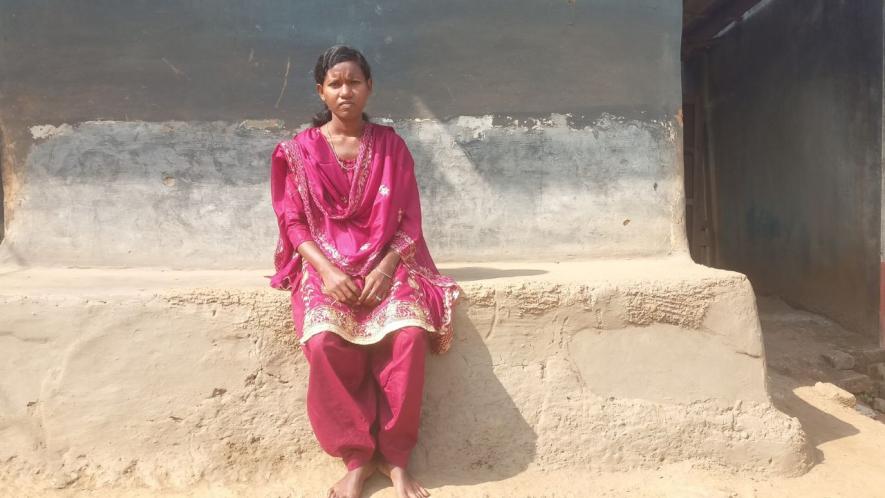
After graduation, Jayanti Shabar of moula village at Raibandh, Bankura, is still looking for a job.
According to the Reserve Bank of India's Handbook of Statistics on Indian States, economic growth has consistently slowed since the COVID-19 pandemic. Between 2019 and 2024, the average annual production rate—including GSDP contributions from agriculture, industry, and services—has significantly declined compared to the previous five-year period.
In 2018, Bengal's GSDP growth rate stood at 5.8%, but it has now dropped to 4% in 2024.
The reality of Bengal’s economic health appears far less promising than the government's projections. The total revenue collection for 2024–25 has decreased by ₹25,000 crore. Consequently, the estimated budget deficit has ballooned from ₹68,250 crore to ₹73,108 crore.
To manage this deficit, the government has reduced capital expenditure by ₹7,000 crore while increasing revenue expenditure by ₹2,650 crore. This shift will likely disrupt ongoing infrastructure projects, hinder wealth creation, and reduce government investment.
“The primary reason for this increased revenue expenditure appears to be welfare programmes and donations aimed at the upcoming 2026 West Bengal Assembly elections,” Mukherjee told this reporter.
The Reality of Employment Opportunities
The recently proposed Bengal budget for 2025–26 has also raised concerns regarding employment opportunities and the overall economic growth. Despite prior promises by TMC of large-scale job creation, the reality appears different.
Before the 2019 parliamentary elections, Chief Minister Mamata Banerjee had announced, "I have 10 lakh jobs ready, and appointments will be made soon." However, the current scenario tells a different story. As of now, 2,64,543 government positions remain vacant across Bengal. In the education sector alone, there are 3,98,160 unfilled teaching posts at the higher secondary level.
Moreover, 60–65% of positions across various boards, corporations, municipalities, panchayats, and government-approved sectors remain unoccupied. Surprisingly, the budget proposal fails to address the issue of these large-scale vacancies.
The budget proposes the establishment of 600 new Madrasa schools, yet it remains silent on the 10,000 existing vacancies for teaching positions in the 614 government-run Madrasa schools in Bengal.
Furthermore, the state has seen a significant decline in educational infrastructure, with 7,018 primary and secondary schools closed in the last decade and plans to shut down an additional 8,202 schools.
The international award-winning "Kanyashree Prakalpa" project, aimed at promoting girls' education, has also faced significant budget cuts. Last year, the project was allocated ₹1,384.56 crore, but for the upcoming fiscal year, this allocation has been reduced to ₹816.31 crore. This reduction raises concerns, especially considering the declining number of girls pursuing higher education. In 2023, a total of 5,14,718 girls passed the higher secondary examination, while in 2024, the number dropped significantly to 3,73,519.
In the health sector, only 6.9% of the budget has been allocated, despite the Chief Minister also serving as the state’s Health Minister. Notably, Bengal continues to forgo ₹1,000 crore annually from the Central government by not implementing the Ayushman Bharat scheme.
The budget claims the creation of 61 crore working days under the state-run Karmashree Prakalpa at a cost of ₹12,355 crore. However, the MGNREGA (rural job guarantee scheme) project, which previously operated in Bengal, had a full-fledged operational cost of only ₹4,000 crore. This raises questions about how ₹12,355 crore was spent on the Karmashree Prakalpa without it showing any visible results. Moreover, there is no budget allocation for this project in 2025–26, nor is it listed under the government’s flagship, Duare Sarkar, (Government at Your Doorstep) initiative.
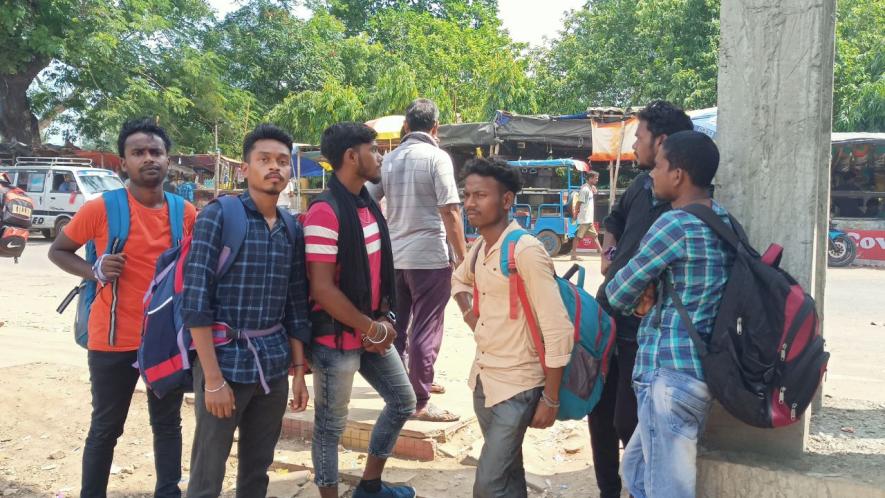
Unemployment youths from different villages in Bankura and Purulia districts are leaving for other states as migrant workers.
Just six days before the budget presentation, Bengal hosted an eight-phase trade conference, where prominent industrialists promised investments worth ₹13 lakh crore. However, the state budget does not mention any concrete investments resulting from this conference.
Since 2015, seven industrial conferences have been held in Bengal, yet the government has failed to provide any credible data regarding job creation or investments. From 2019 to 2024, as many as 2,227 companies and 37 corporate houses relocated their offices to other states.
According to the state government’s Environment Report, a total of 21,521 industries shut down between 2016 and 2021, resulting in widespread job losses. However, the government has not disclosed any reliable information regarding the number of workers who lost their livelihoods.
The budget also overlooks the plight of migrant workers who left the state in search of employment. Panchayat tax collectors receive only ₹600 per month, while mid-day meal workers earn ₹1,666 per month without any social security. Lakh of contractual workers continue to work for nominal wages, with no mention of their future prospects in the budget.
The budget proposes an estimated income of ₹22,500.33 crore from alcohol sales in the 2025–26 fiscal year. Under the TMC regime, government revenue from alcohol sales has increased by 833%, with 7,746 government-approved liquor shops currently operating in the state. The government now proposes further expansion, granting licenses to open liquor stores within 1 km of Kolkata Municipal Corporation areas, 2 km in municipal areas, and 3 km in panchayat regions. This move has sparked public concern, as it appears the government is prioritising alcohol revenue over social welfare.
During the budget session, little attention was given to addressing the struggles of common people. Instead, both the ruling TMC and the opposition Bharatiya Janata Party (BJP) appeared more focused on religious rhetoric, attempting to establish dominance over each other.
This has raised questions among the public, especially following Rashtriya Swayamsevak Sangh (RSS) chief Mohan Bhagwat's visit to Bardhaman on February 13. Many are wondering whether Chief Minister Mamata Banerjee, once hailed as "Durga" by RSS, is now engaging in competitive religious politics while ignoring the real issues faced by the people.
Overall, the Bengal budget for 2025–26 appears to be more about political posturing than addressing the state’s pressing issues. The lack of focus on employment, education, healthcare, and social welfare continues to fuel public dissatisfaction, leaving many to question the state's future trajectory.
The writer covers the Jangalmahal region for ‘Ganashakti’ newspaper in West Bengal. The views are personal.
(All pictures by Madhu Sudan Chatterjee)
Get the latest reports & analysis with people's perspective on Protests, movements & deep analytical videos, discussions of the current affairs in your Telegram app. Subscribe to NewsClick's Telegram channel & get Real-Time updates on stories, as they get published on our website.









